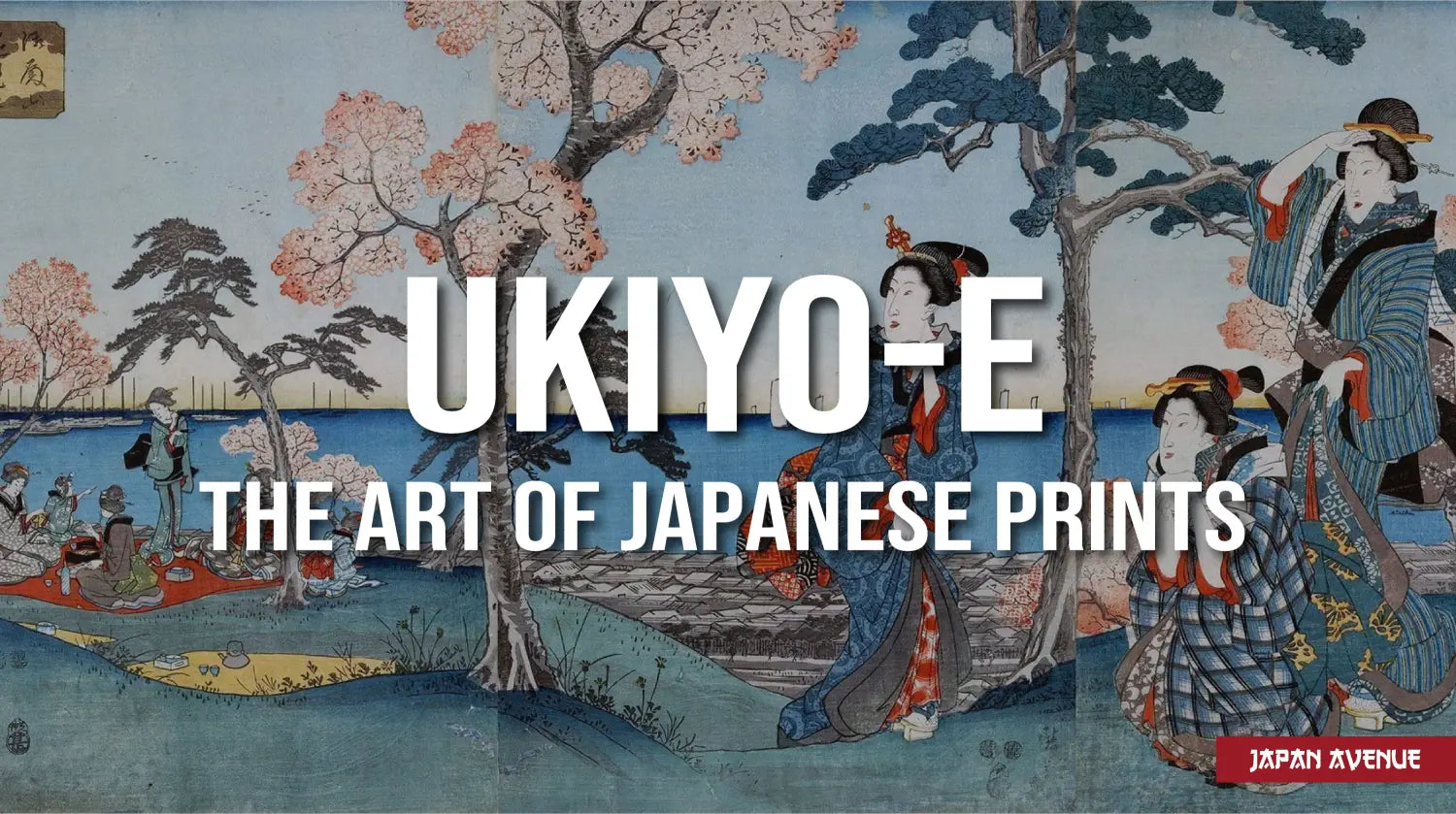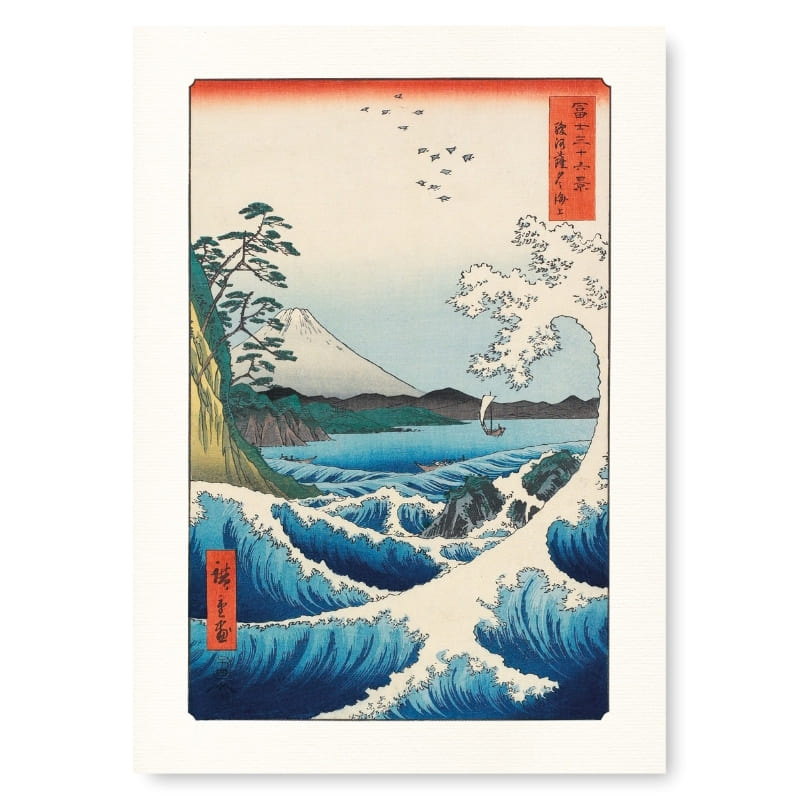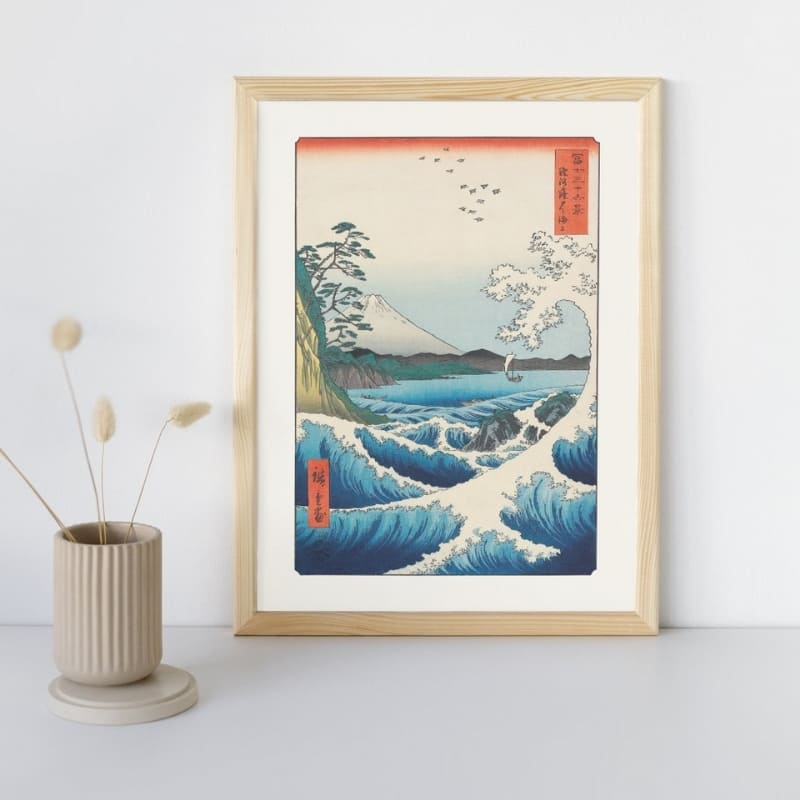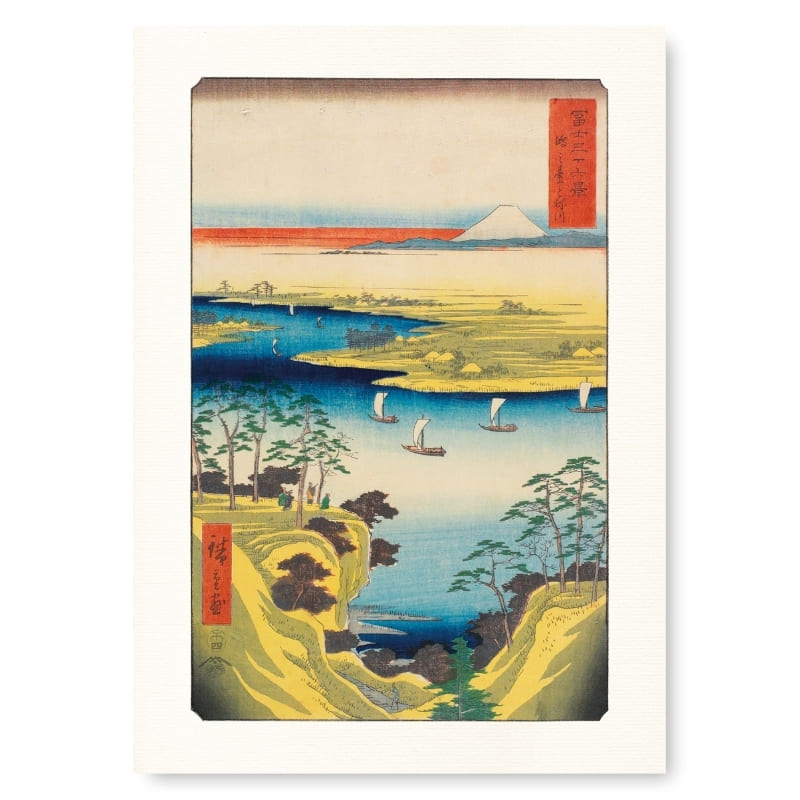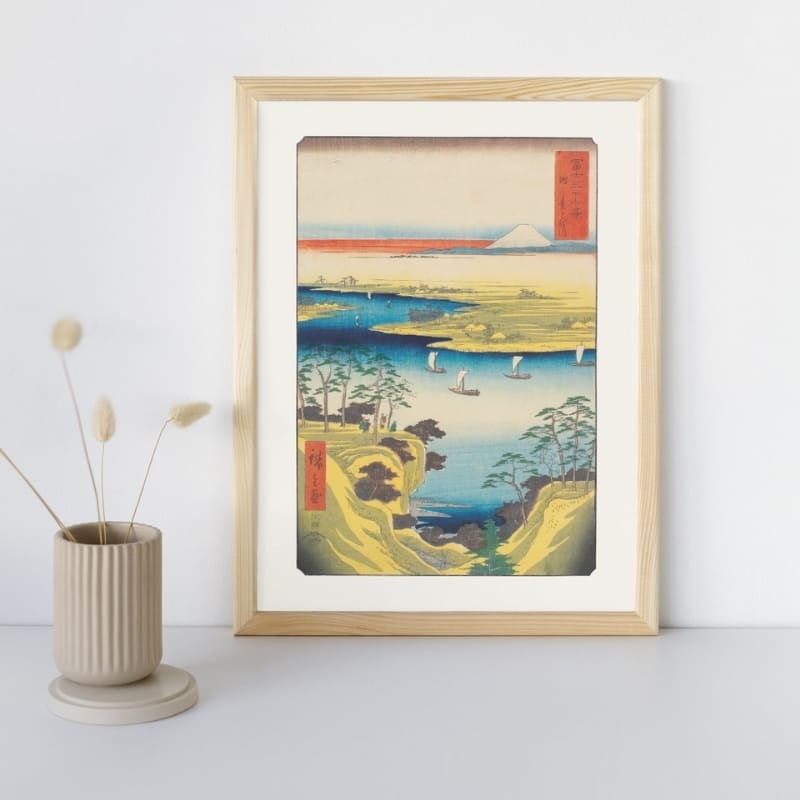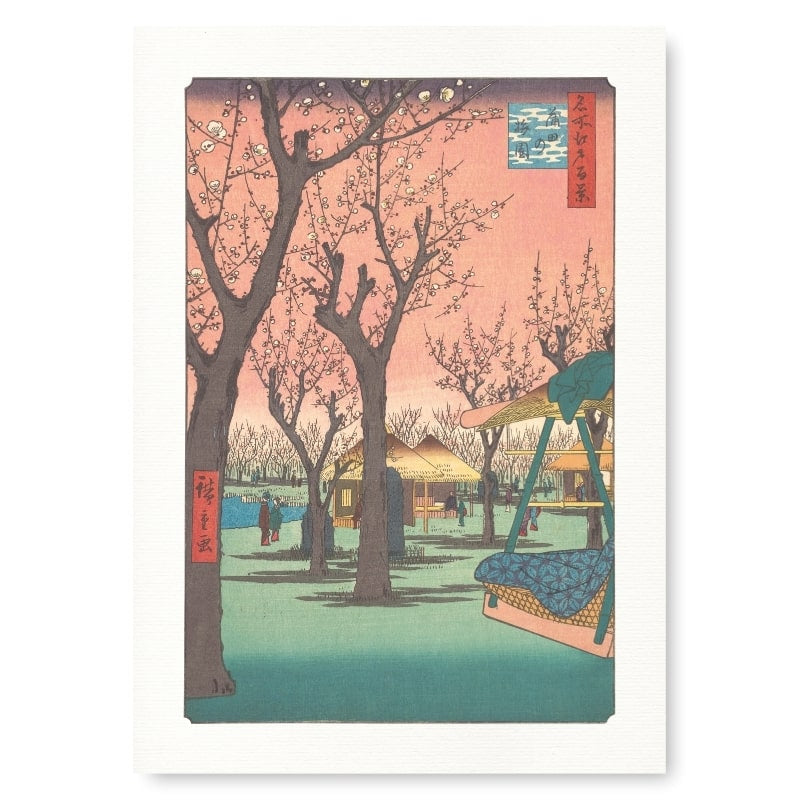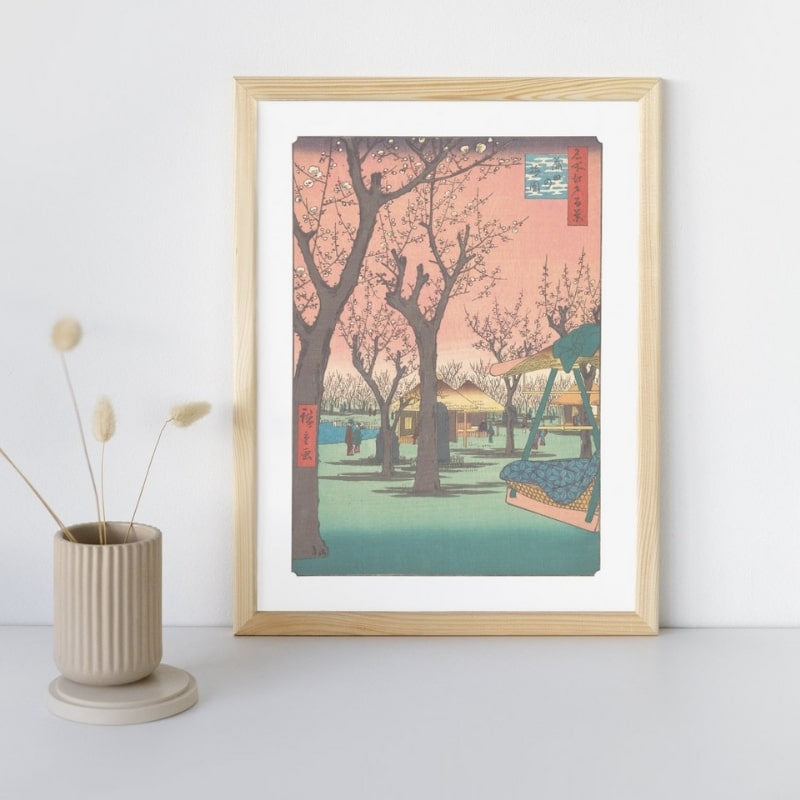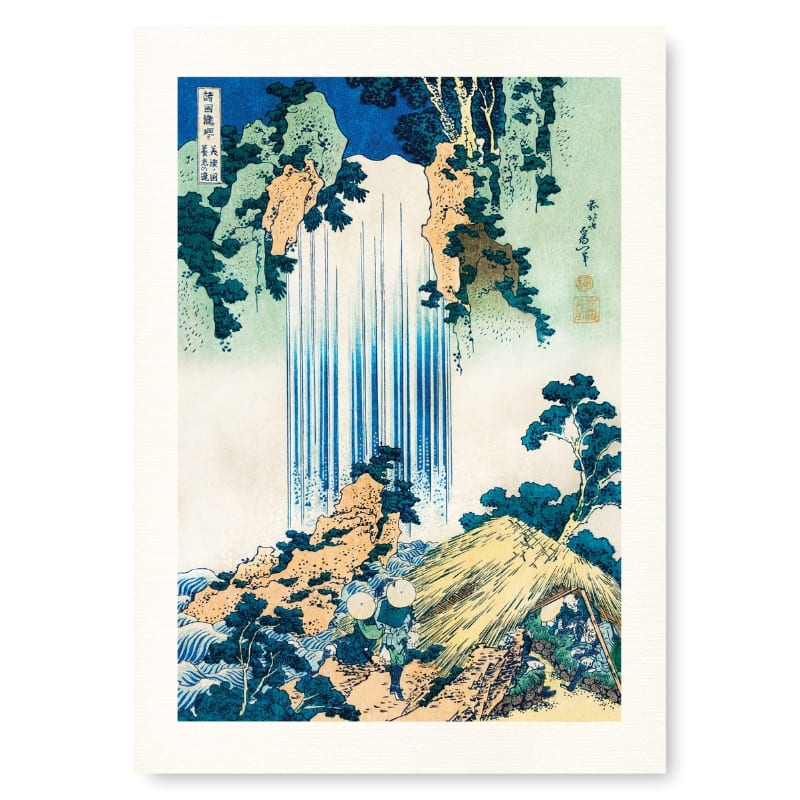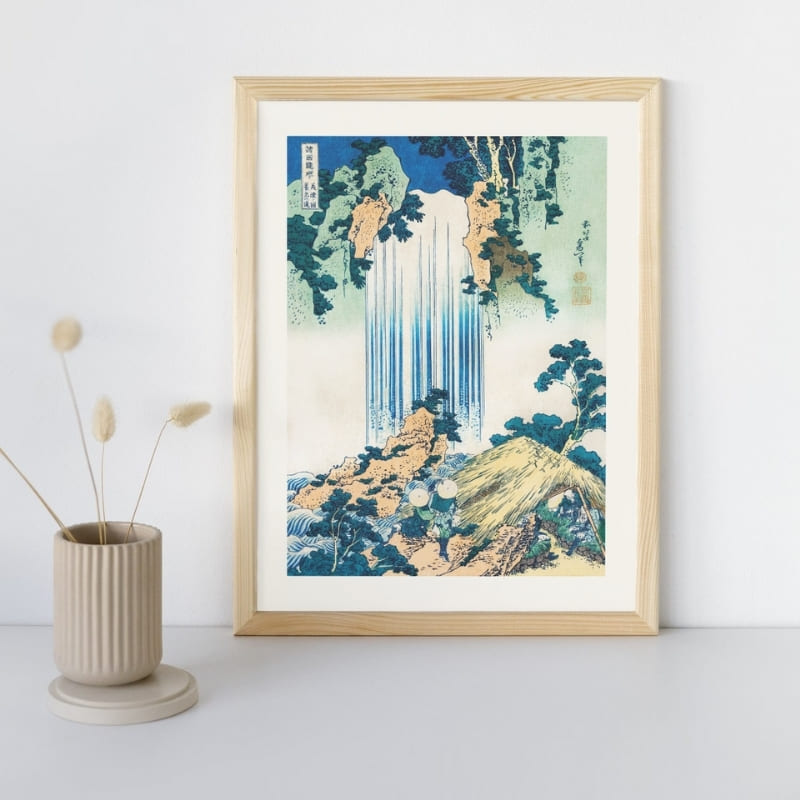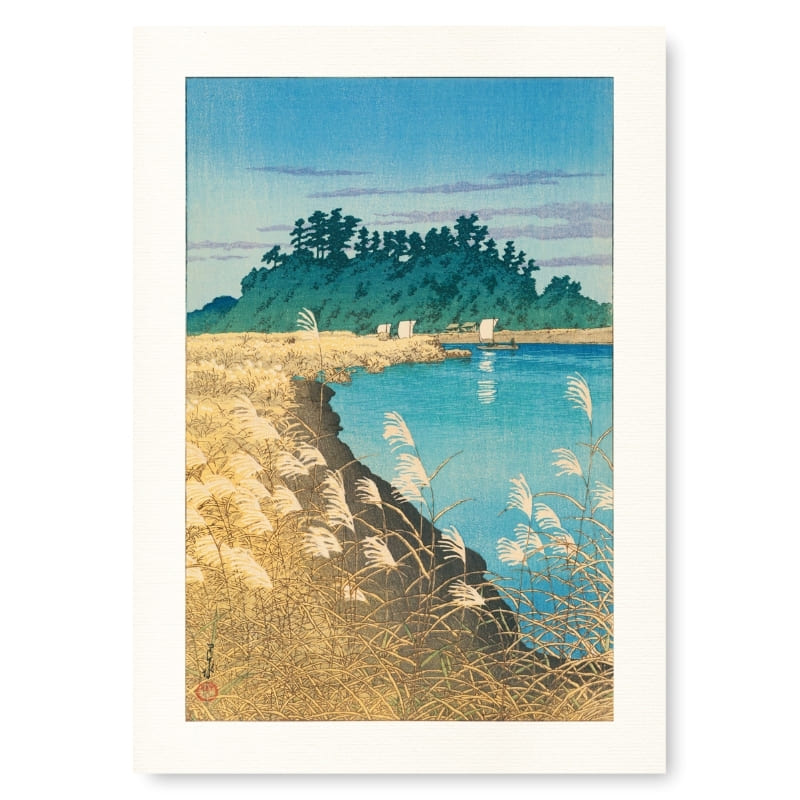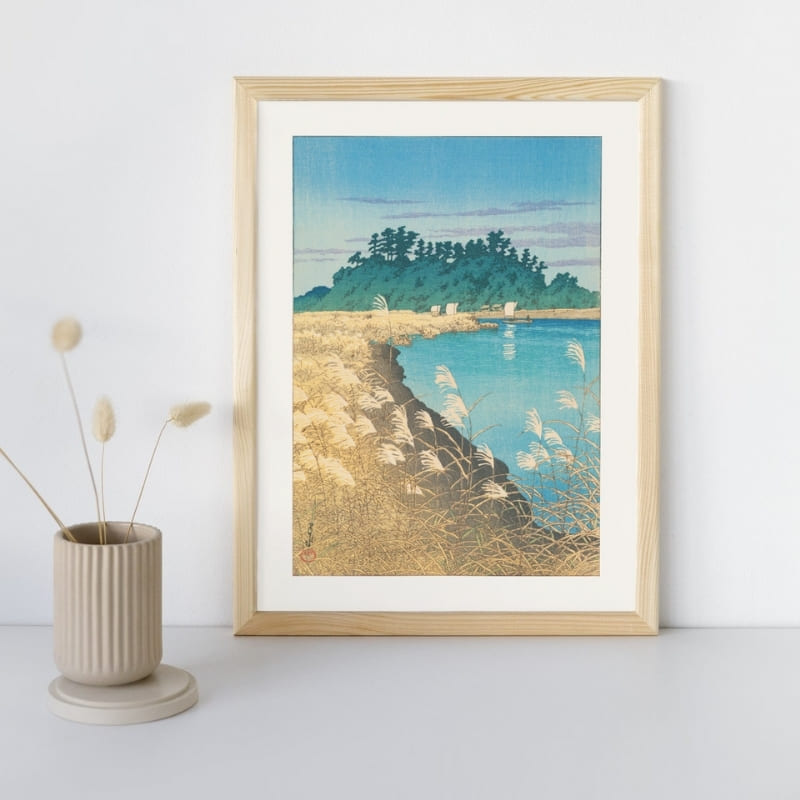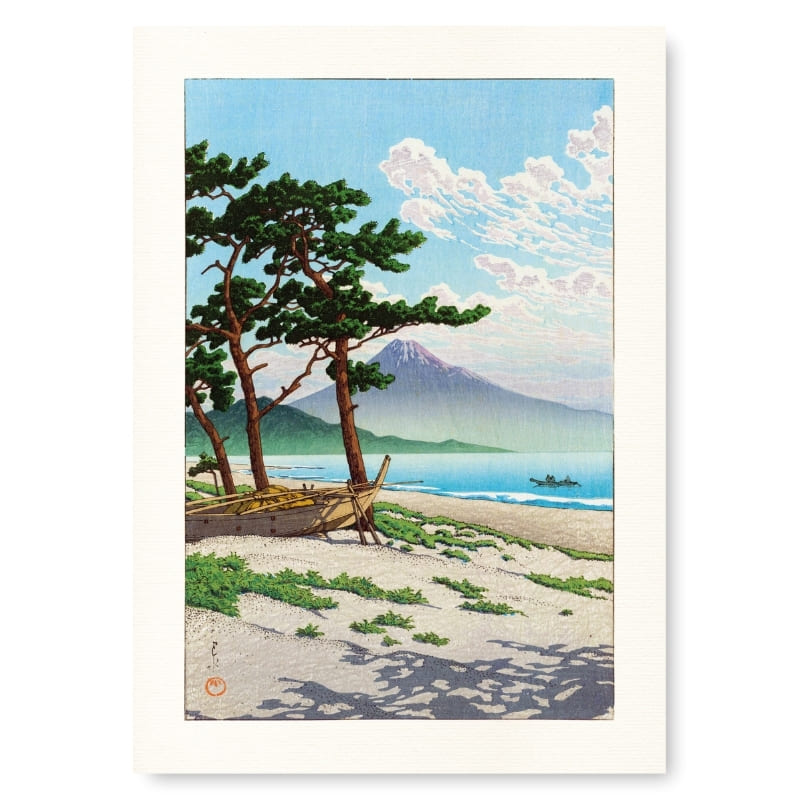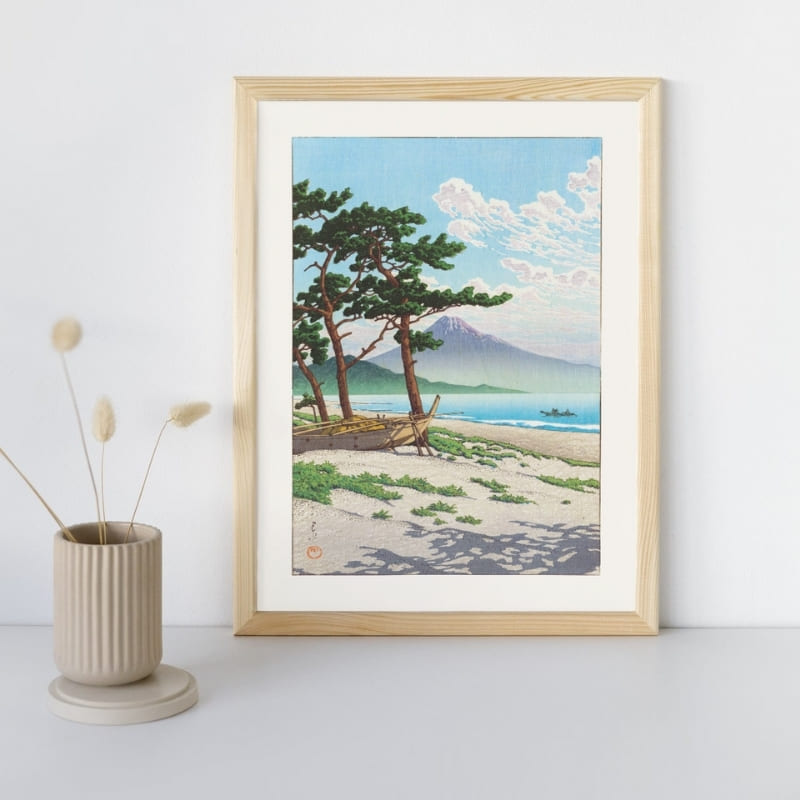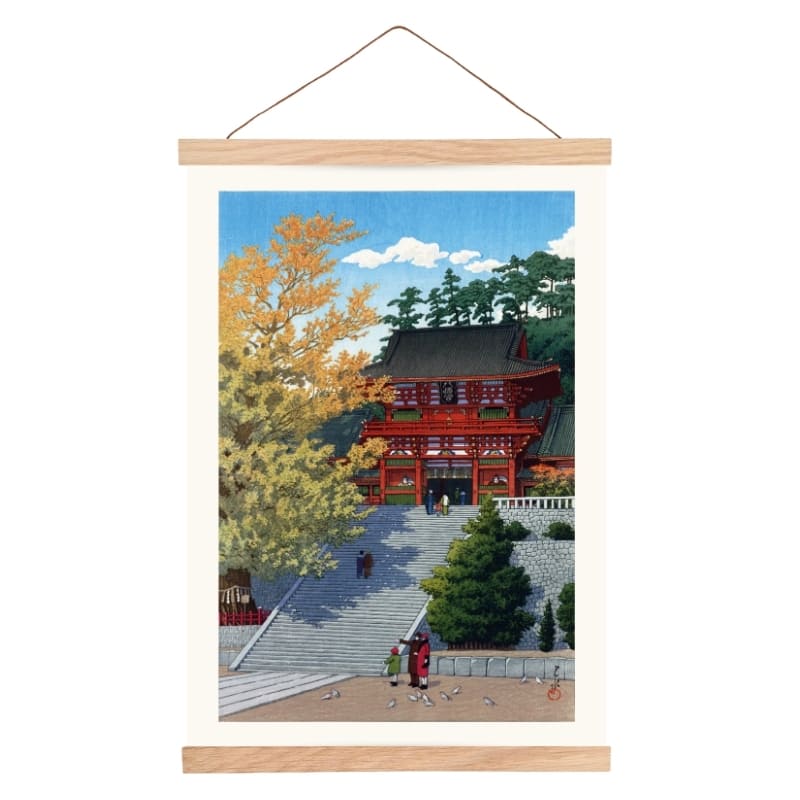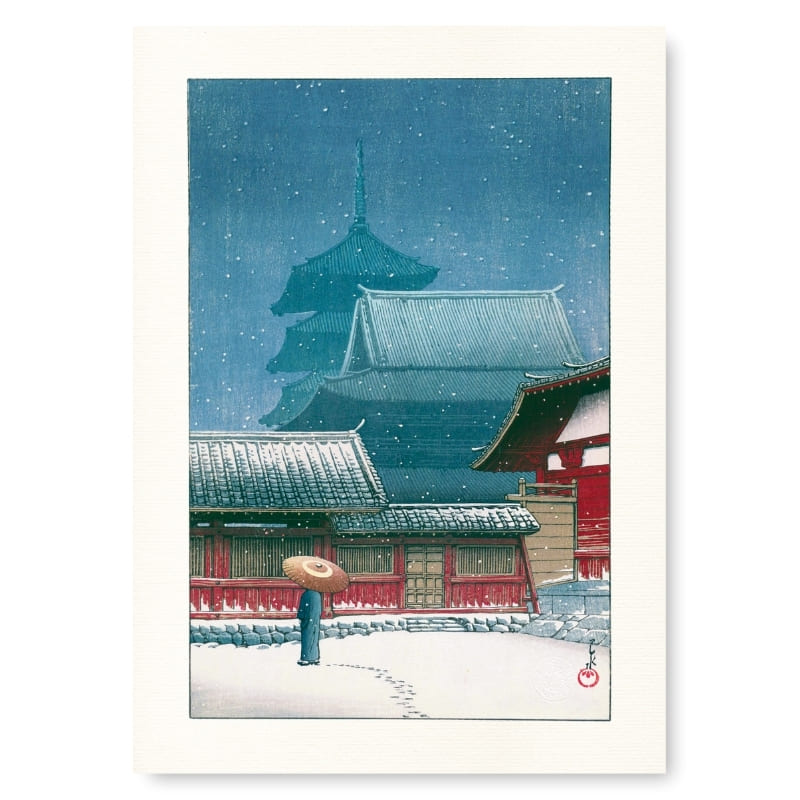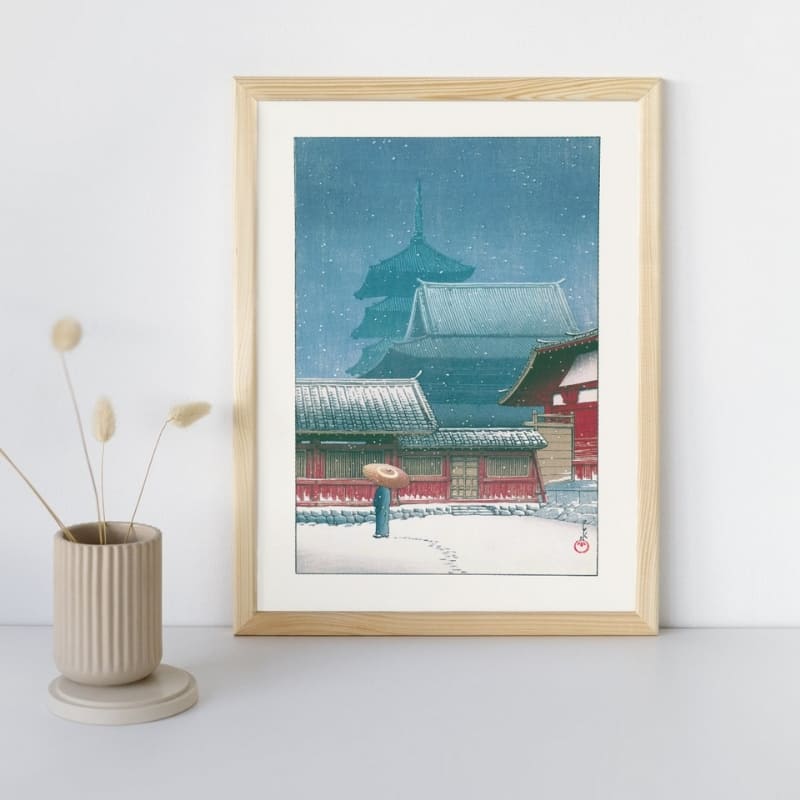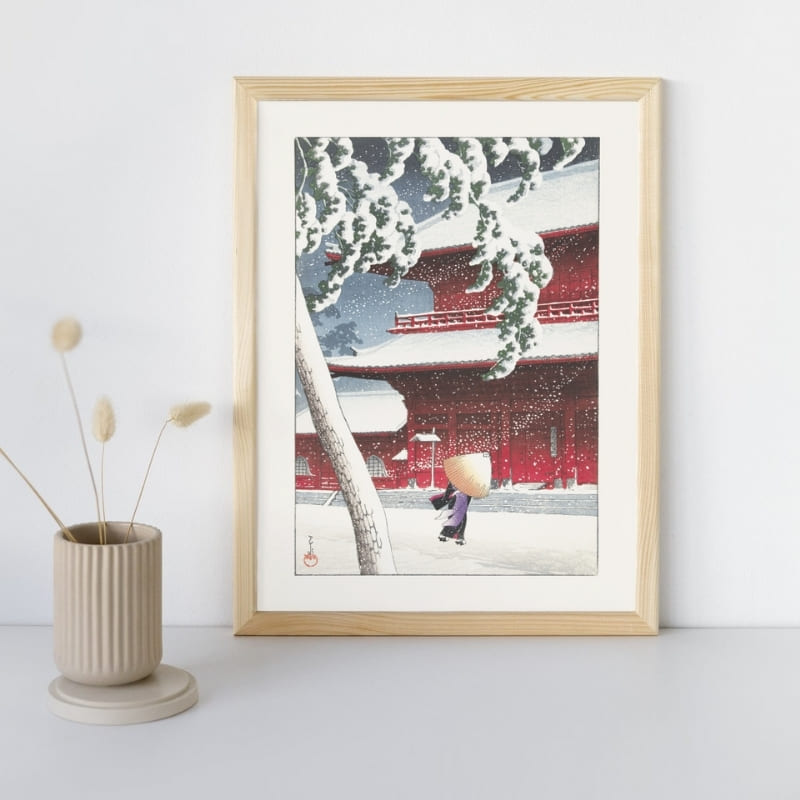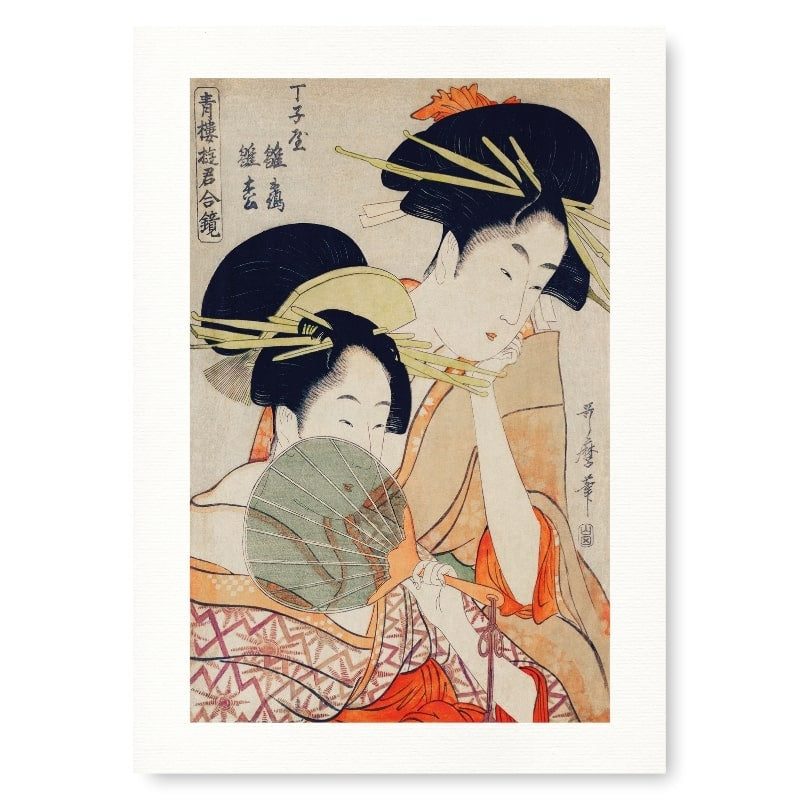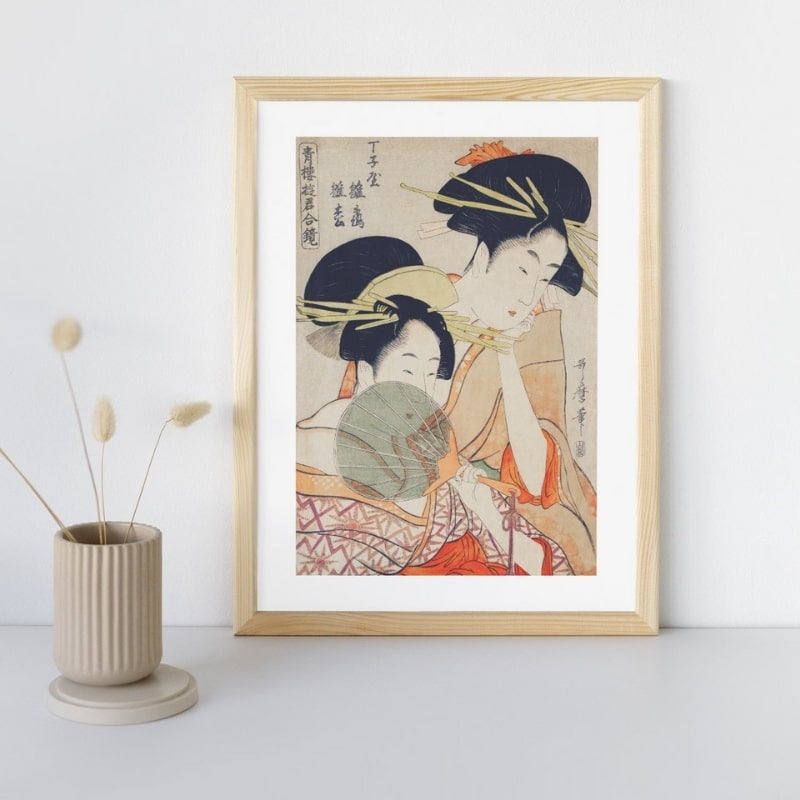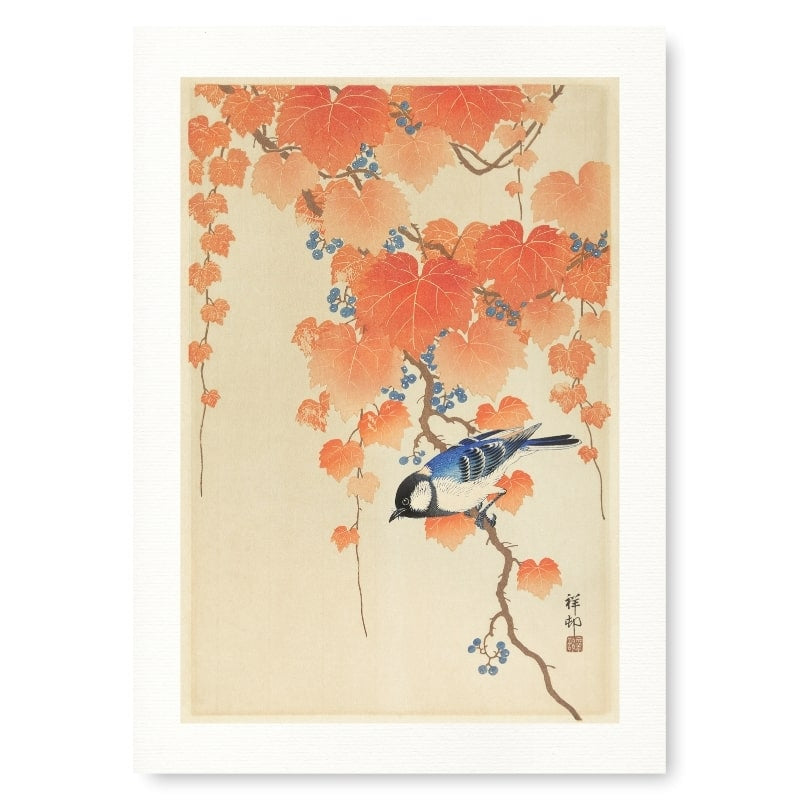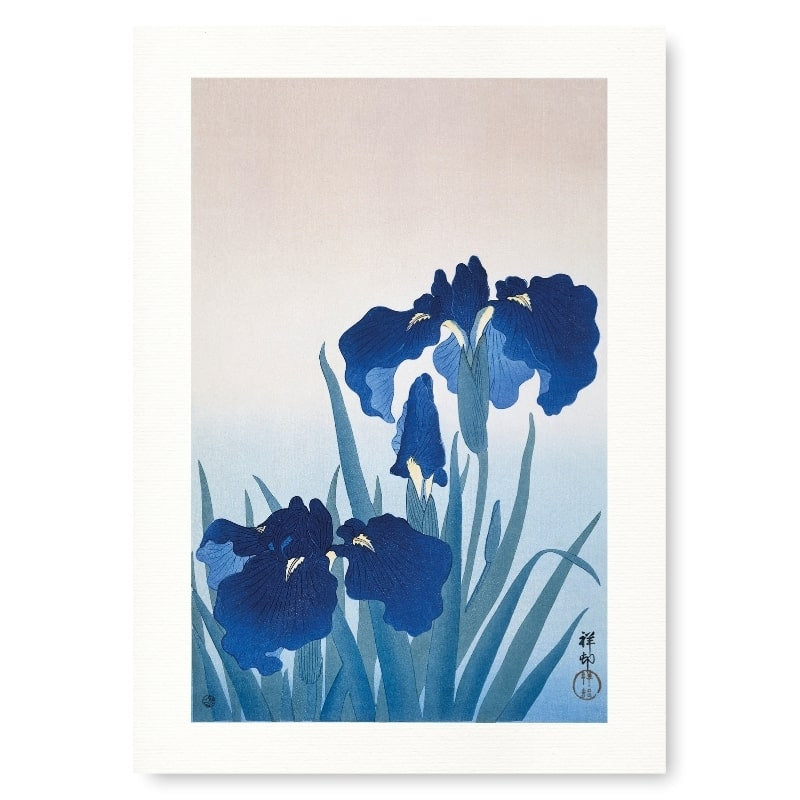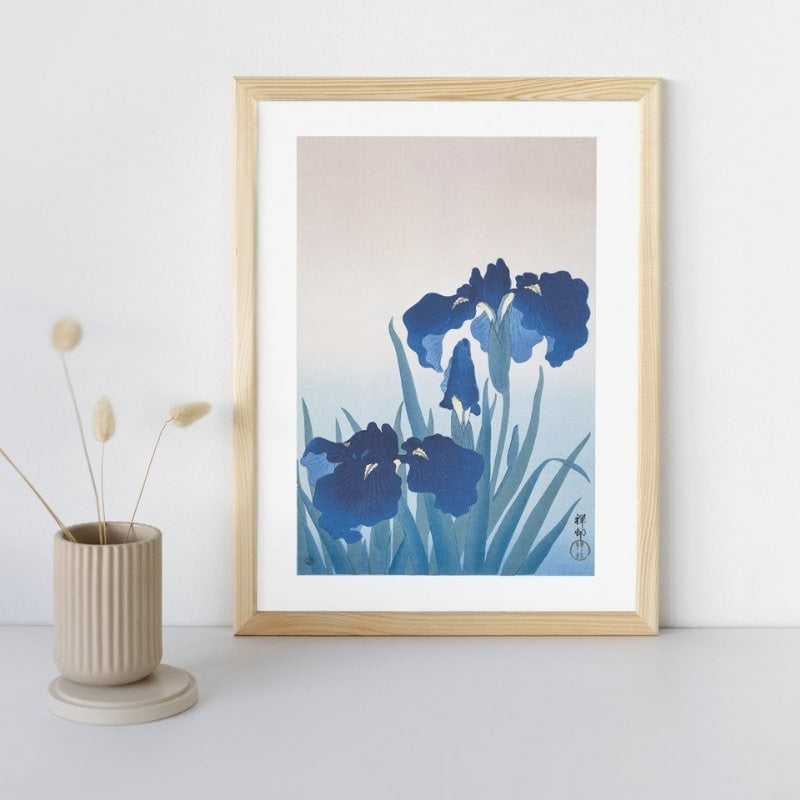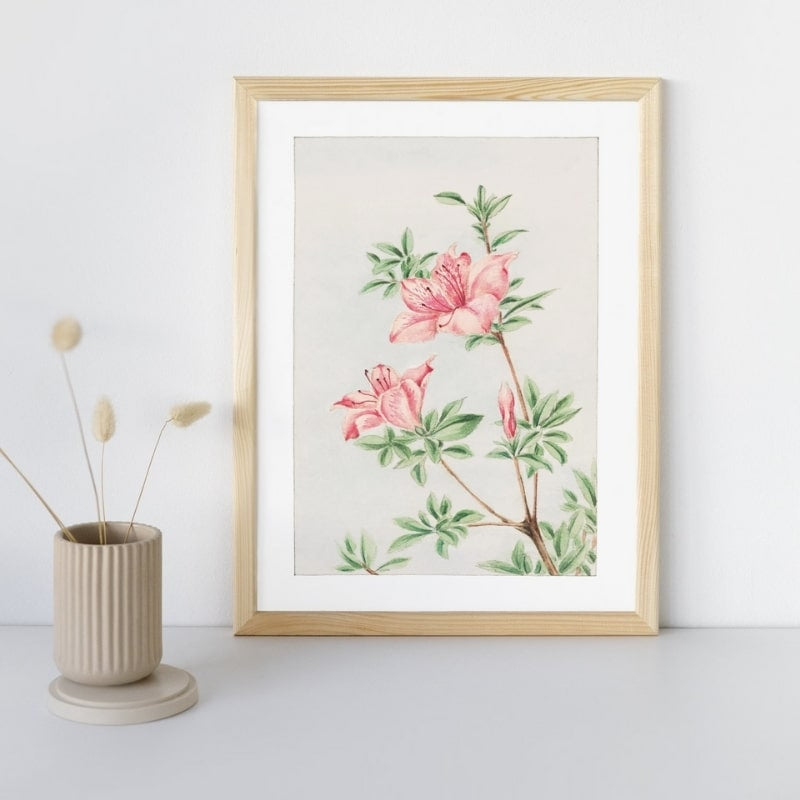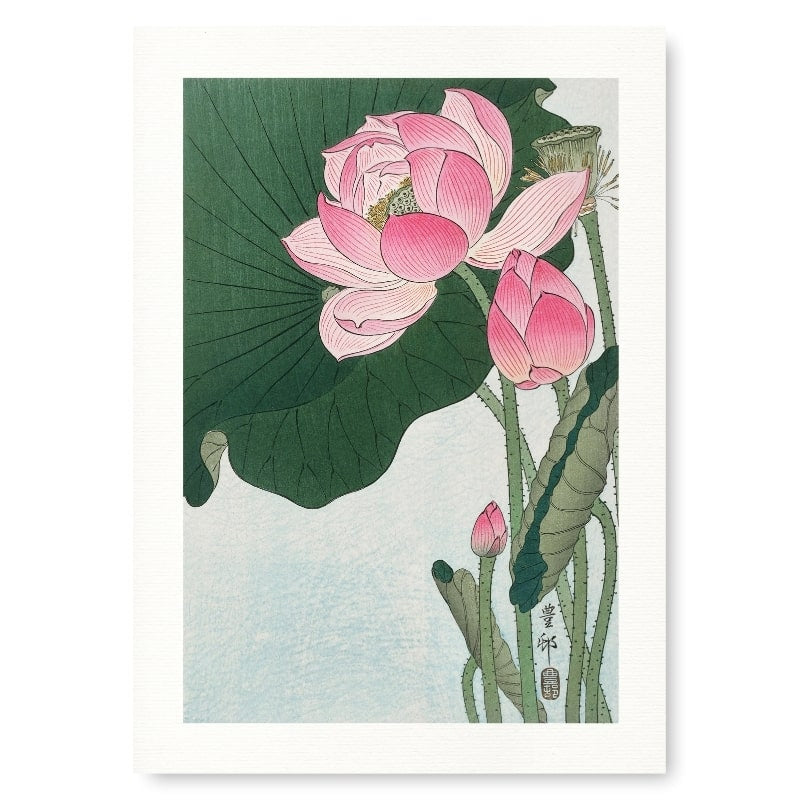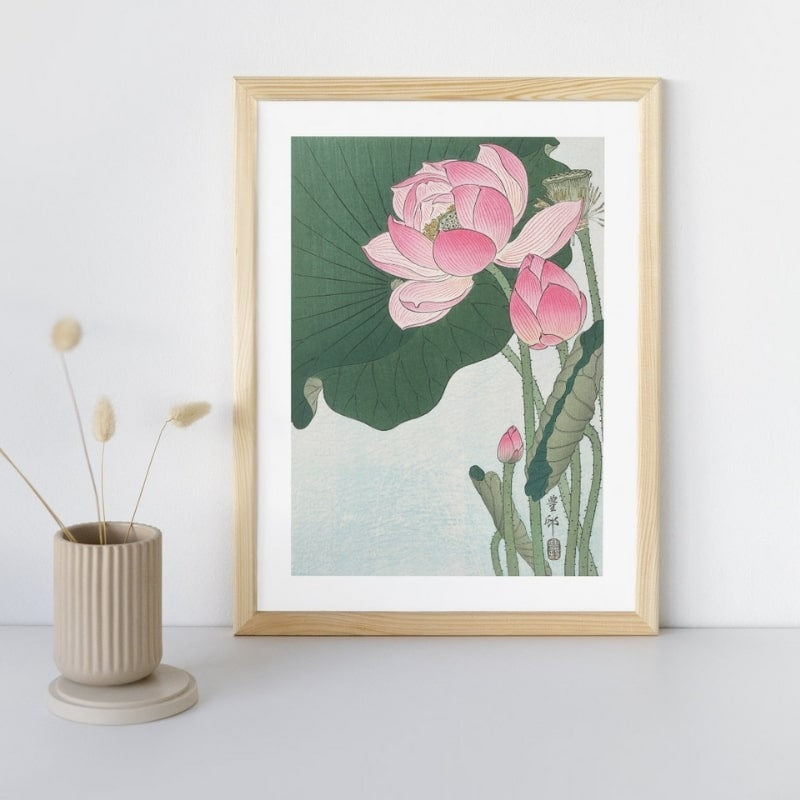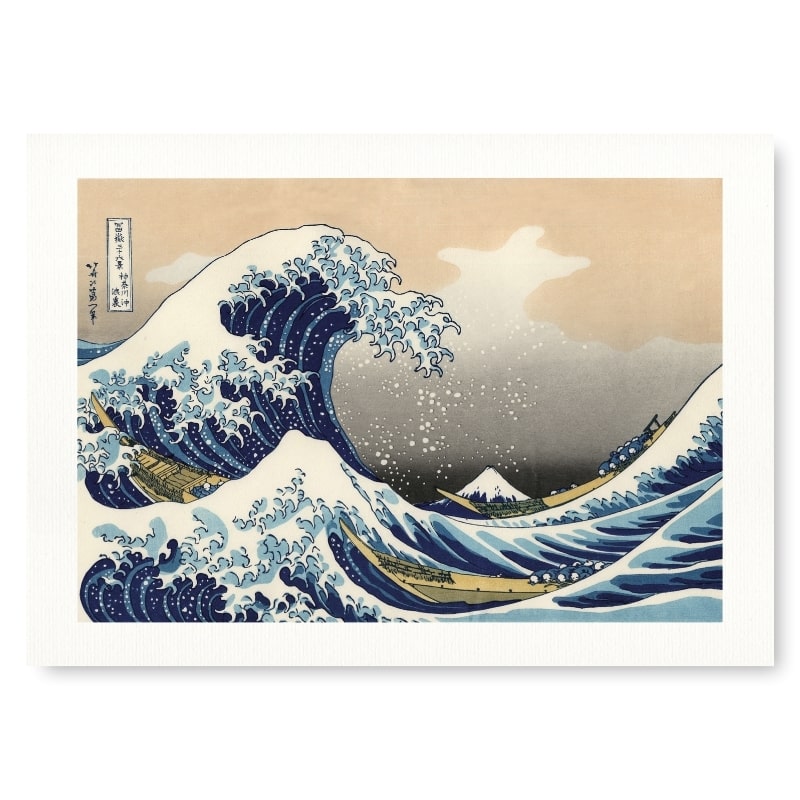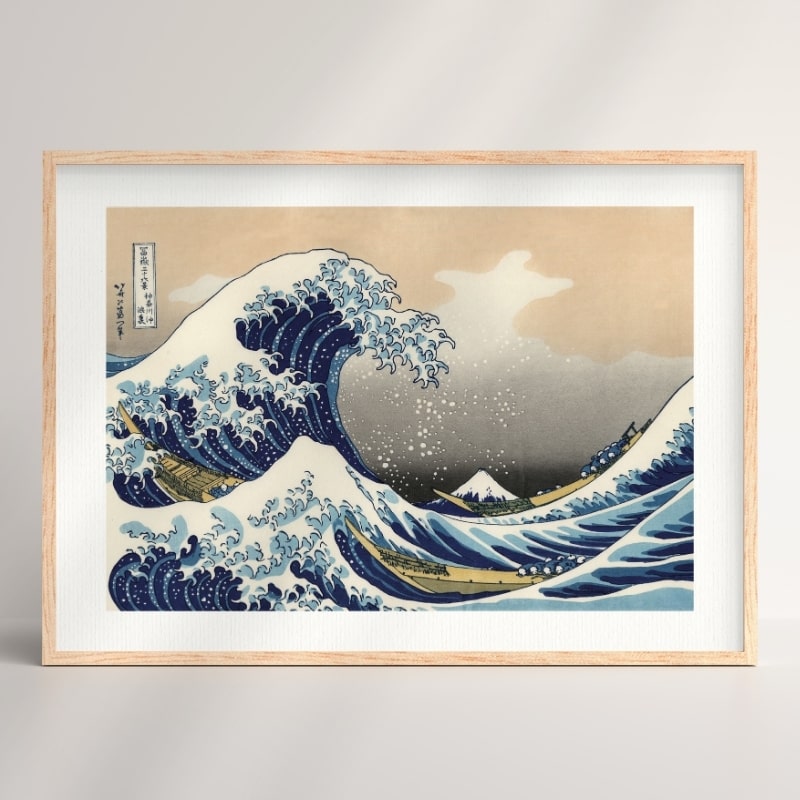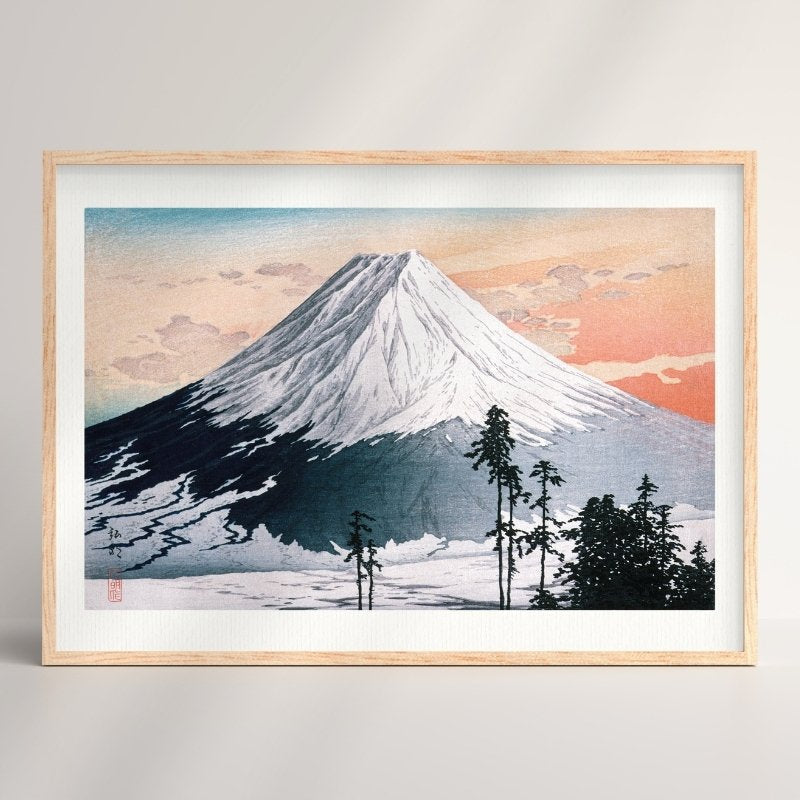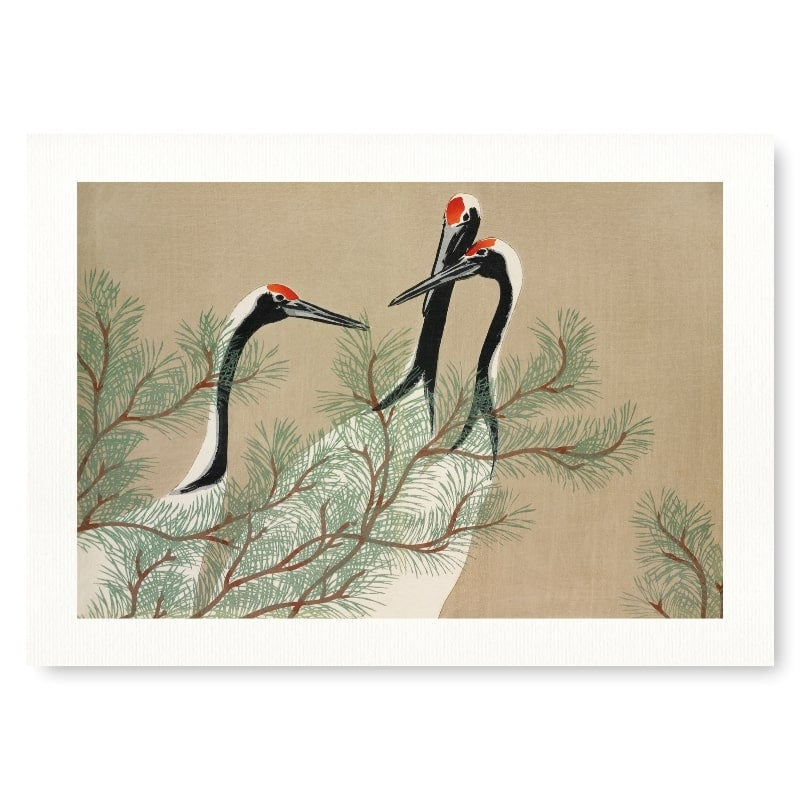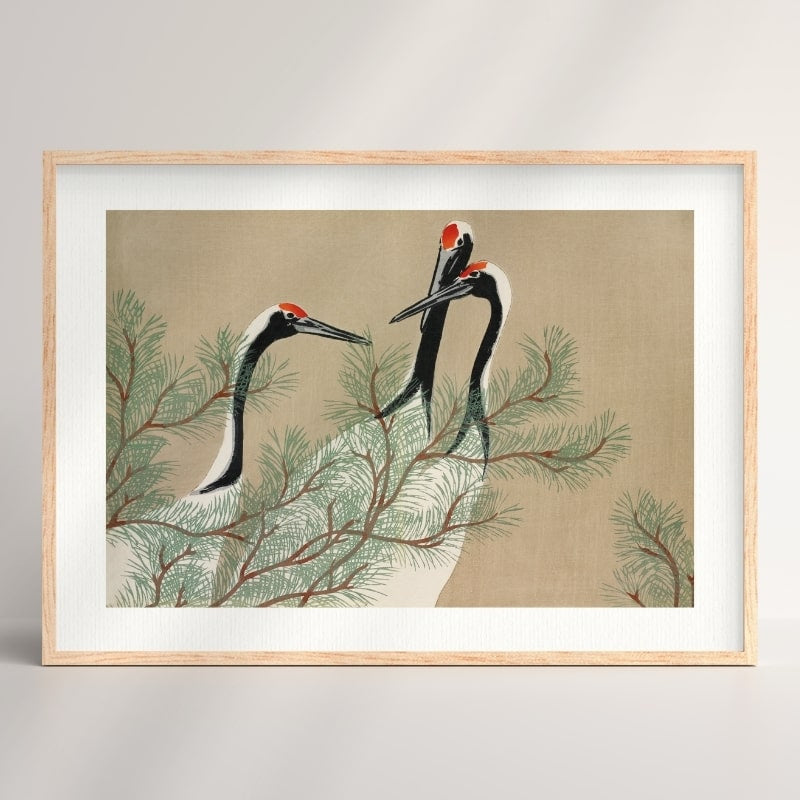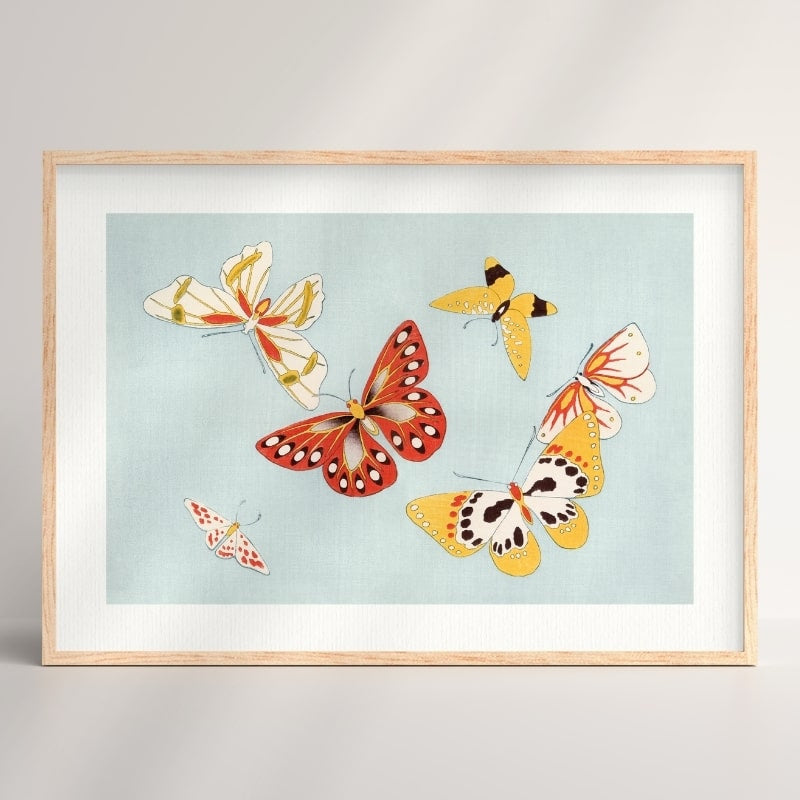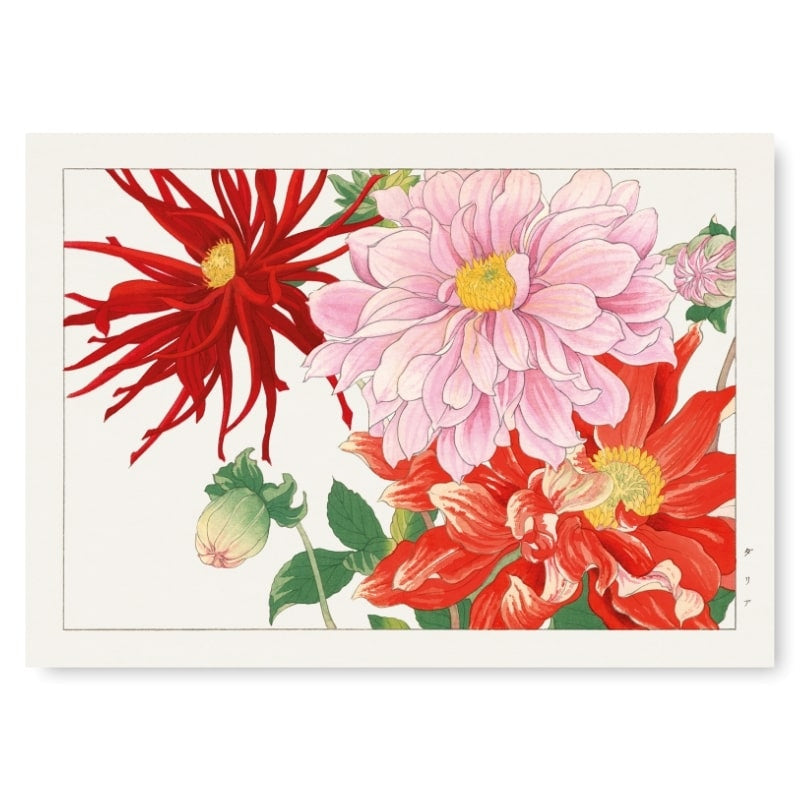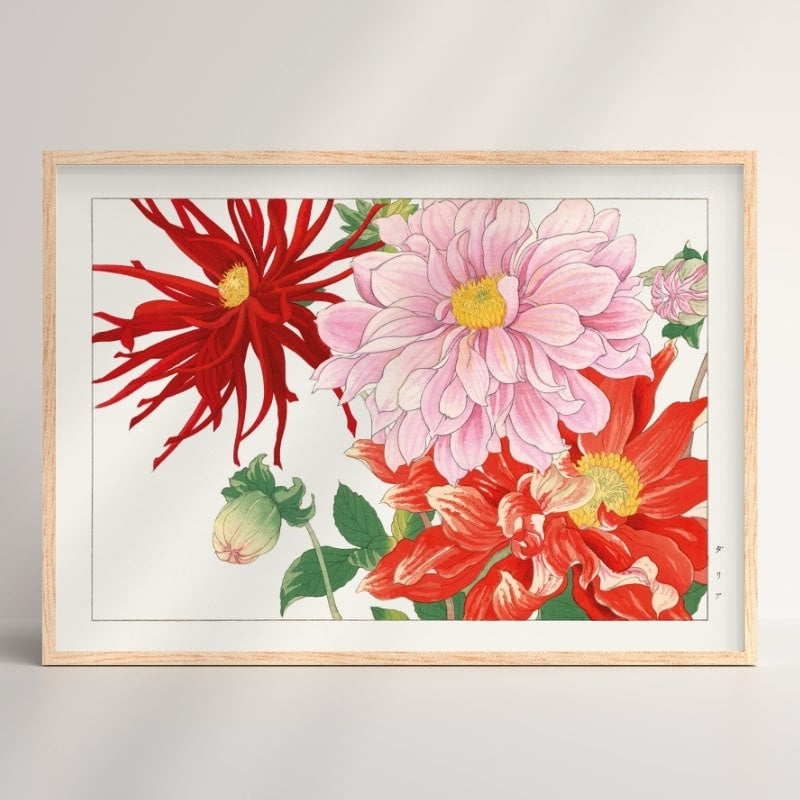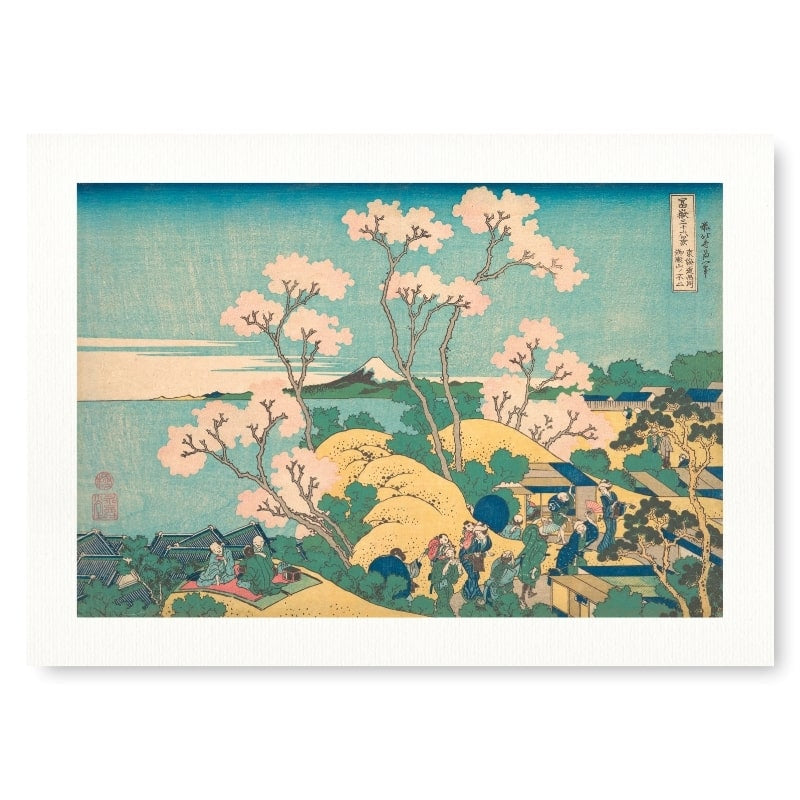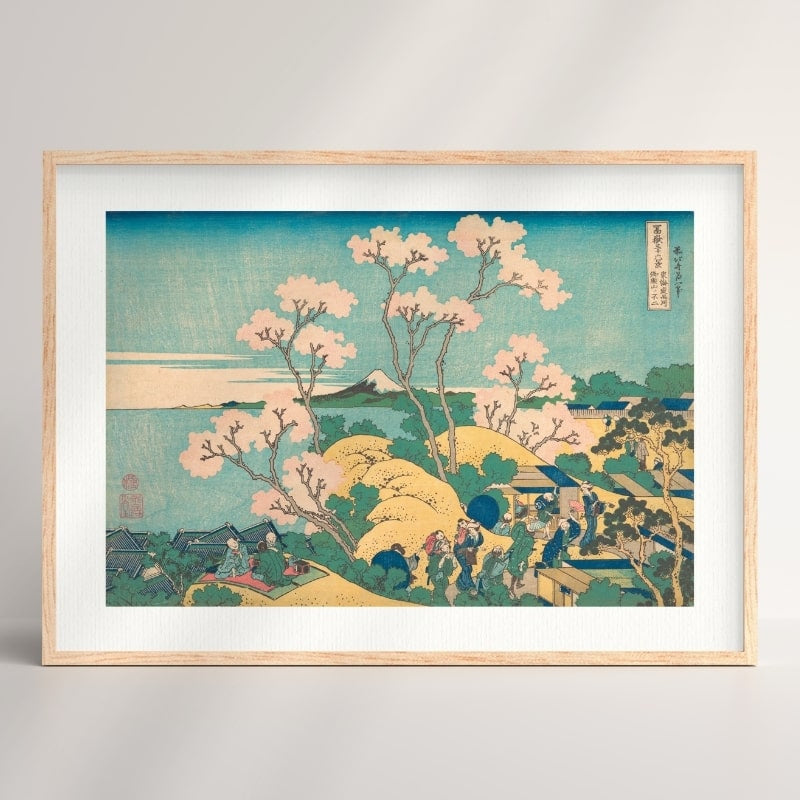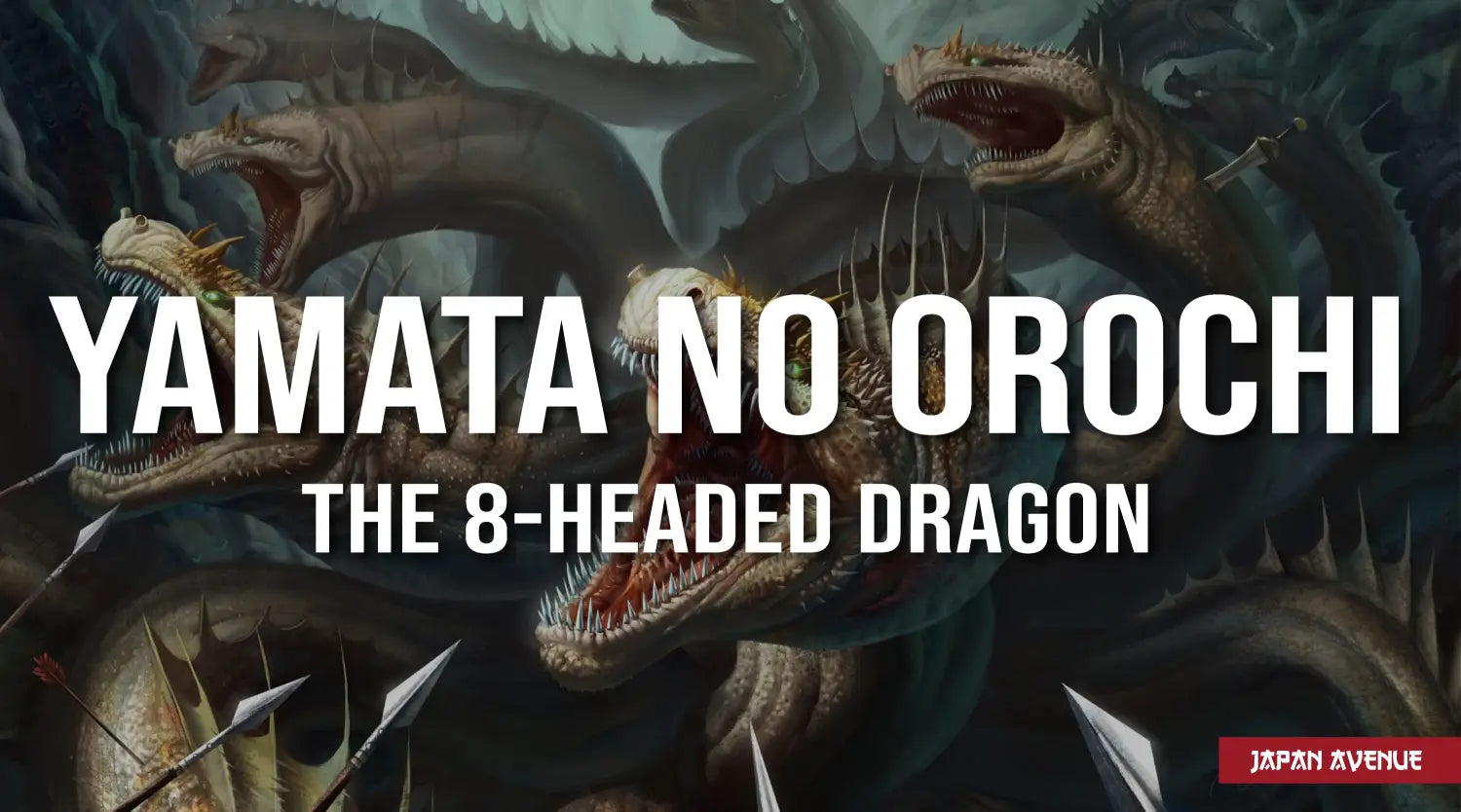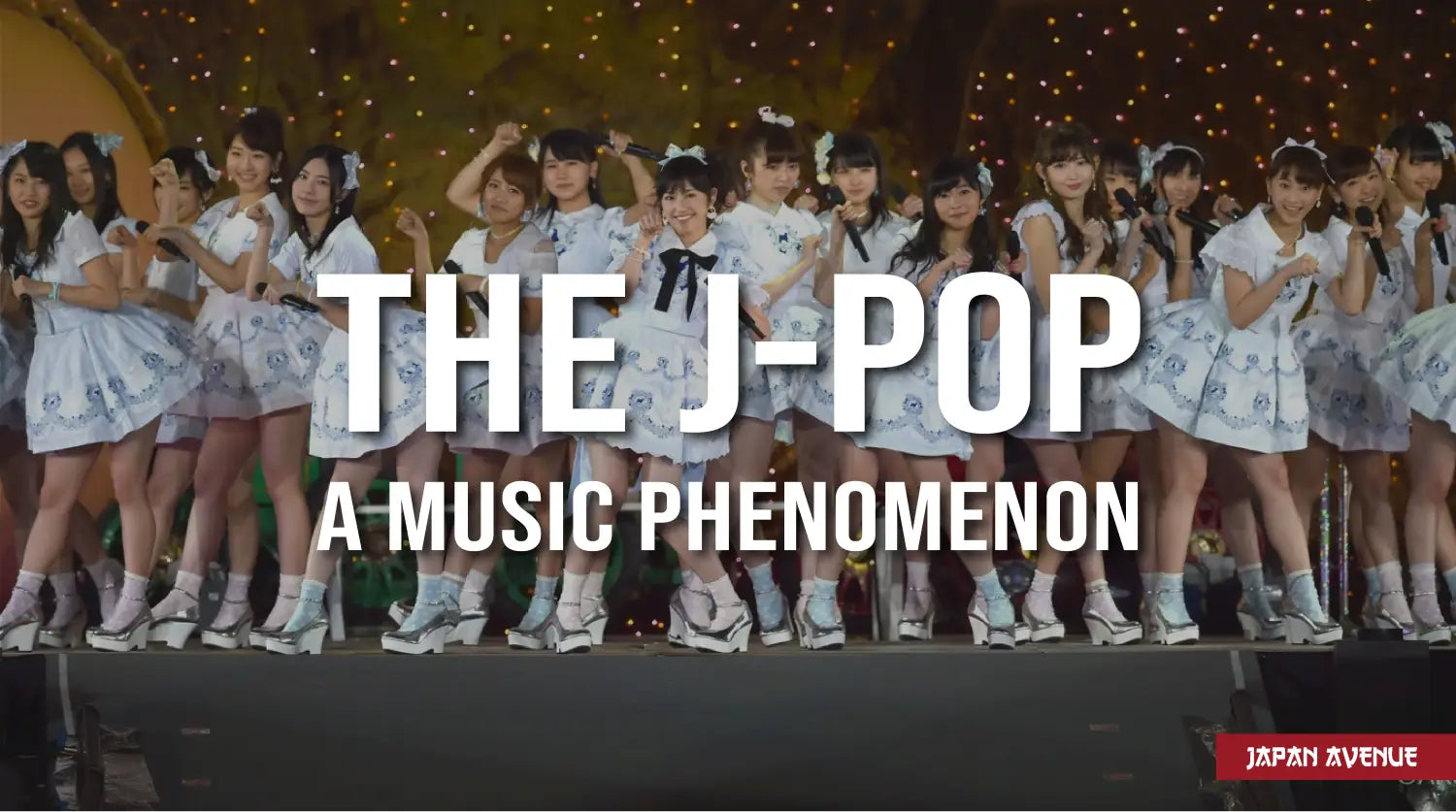As one of the most important art forms in Japan , Ukiyo-e will remain forever engraved in the history of the Land of the Rising Sun.
Ukiyo-e is an artistic movement that appeared in Japan during the Edo period and is mainly represented by Japanese prints. Inspired by the ephemeral beauty of a world that is constantly changing, ukiyo-e can be translated as "image of the floating world" and refers to both the artistic movement and the artworks that result from it.
By extension, an ukiyo-e refers to a print: a limited edition drawing, printed with ink by using a woodblock and engraved in relief.
Did you know that Japanese prints are inspired by the Chinese? The method used (xylography) was borrowed from Buddhist monks, but not the themes! Let's have a closer look at all this.
🌊 Ukiyo-e, the image of the "floating world"
In 17th century Japan, the "floating world" or ukiyo (without the e) referred to the world of entertainment, kabuki theater, teahouses and libertinism. The quest for pleasure was prevalent among the new merchant bourgeoisie who were not highly appreciated by the Edo aristocrats.

"Tōkaidō Gojūsantsugi", print by Utagawa Hiroshige dating from 1848-1850. (©Bnf)
This description of ukiyo (浮世) contrasts its Buddhist origin. According to the Buddhist thought, ukiyo refers to a present world that is illusory and encumbered with suffering. The remedy, according to this religion or philosophy, is meditation and contemplation of flowers, rivers and the wonders of nature.
Japanese folk artists not only invented their own interpretation of ukiyo, they also created a new term for it: "Ukiyo-e". The "e" standing for "image".
Appearance of ukiyo in Japanese art
The Japanese writer and Buddhist monk Asai Ryoi was the first to use the term ukiyo in the Japanese art scene. His work "Tales of the Floating World" (Ukiyo monogatari) was published around 1665.
It was a time of peace, prosperity and reformation of the Japanese urban bourgeoisie. It distinguished the Buddhist ukyo-e from the Edo period ukyo-e by a spiritual approach centered on meditation. A concept that seduced Japanese painters and engravers.

Ukiyo-e is revealed as a curious mixture of religiosity and the bustling life of brothels - green houses in Japan - of the so-called reserved districts.
👉 Japanese printing techniques
As a source of inspiration throughout the world, the ukyio-e is at the origin of the most beautiful Japanese prints.
The term "print" comes from the Italian "stampa" which means press. It refers to any print made with ink on a flexible support, such as paper, from an engraved matrix (in wood or stone).
The development of ukiyo-e is not only assigned to the draftsmen; it is the union of various skills:
The ukiyo-e illustrator
The artist uses the black line technique on a white paper to realize its master-drawing (shita) using black ink (just like the software, of the whiteboard video animation, currently in vogue). As for the colorization, the artist simply gives indications to the printer.

Japanese tools of the wood engraver and the ukiyo-e printmaker. (©Bnf)
The ukiyo-e engraver
The engraver carves the drawing on the wood blocks. Each color had its own block (similar to the four-color printing process). The engraving damaged the shita of the drawer, who comforted himself by supervising the work of the engraver.
The ukiyo-e printer
The printer spreads black ink and color pigments on the engraved woodblocks by using a stamp made of bamboo strings (baren). If the ukiyo-e is colored, the printer uses registration marks (kento) to ensure that the colors are correctly superimposed. An offset of one millimeter results in a slightly different print. For this reason, collectors of Japanese prints, which have limited editions (about 30 copies per creation), claim that each copy is unique.
The ukiyo-e editor
The editor is the conductor of the orchestra. He selects and gathers all of these talents in order to produce the Japanese print.
Apparently, only the names of the draftsmen are retained by history. In addition, the 20ᵉ century witnessed the emergence of the Sosaku-Hanga (creative printmaking) trend where the draftsman engraved and printed his prints himself.
To see a master printer in action, we recommend watching this video. In addition to its high quality, it really shows all the different stages involved in making a print. A very meticulous work!
🕵♀ How to recognize a Japanese print?
If you decide to buy an authentic Japanese print, created according the rules of this ancestral art, you must be prepared to invest a substantial amount of money, but above all, to be able to certify its origin.
The passionate collectors will not hesitate to use ukiyo-e experts; the investment justifies this additional cost.
Alternatively, you may want to estimate the value of these prints yourself:
- Ask for a look at the engraved woodblock that was used for the print.
- Check if the piece has a designer's seal.
- Closely examine the areas that are not saturated with ink. You should be able to distinguish paper fibers. A reproduction does not represent any difference between the printed and unprinted parts.
- Compare the size of the ukiyo-e you want to buy with the data found on reference books. Famous Japanese printmakers' works are described in them.
🗻 Japanese woodblock print, from craft to artwork
Ukyo-e developed through the centuries, reflecting its role in society. Over the years, this simple woodblock printing technique has evolved into a true work of art.
The Edo period, the golden age of ukiyo-e
During the Edo period (1600 - 1868), the "images of the floating world" coexisted with traditional paintings, which were approved and loved by the aristocrats. Ukiyo-e art, was considered vulgar, but gained the admiration of the common people and wealthy merchants.

"Contest of contemporary beauties of the pleasure districts", print by Kiyonaga Torii from 1784. (©Bnf)
The prints represent scenes of daily life in the pleasure district of Tokyo: portraits of geisha, erotic scenes, portraits of courtesans and famous actors. It is the time of the great masters of woodblock prints such as Utamaro and Sharaku.
At the end of the 18th century and in a completely different style, prints focused on majestic natural landscapes portrayed by Hokusai and Hiroshige.
The Meiji era, decline of ukiyo-e
The Meiji era (1868 - 1912) marked the enforced opening of Japan to the rest of the world as well as the end of the traditional ukiyo-e: the Meiji prints were different. Western techniques were learned and introduced by Japanese artists (shadow play, perspective, shading, chiaroscuro, etc.). Kiyochika Kobayashi (1847-1915) is the artist who best represents this trend.
Meanwhile, the frenetic westernization of the Land of the Rising Sun made prints anachronistic and outdated. Also, photography became a serious competitor.
Shin-hanga, the new prints (1910 - 1960)
It is said that renewal is the work of youth! That of ukiyo-e art is the work of a young, 20-year-old Japanese artist: Shozaburo Watanabe. His starting point is both simple and paradoxical: traditional Japanese prints are highly appreciated in Europe and the USA, while artists and craftsmen are neglected and even starved in Japan. This woodblock printing publisher created a new artistic line, making the master craftsmen of woodblock printing more aware of it.

"Snow in Shinkyo, Nikko" (1930), print by Hasui Kawase, representative of the Shin-hanga movement.
The new woodblock print is drawn with a Western touch and sensitivity. The themes of the shin-hanga current are those of the Edo period (portraits of actors, beautiful women, rural or urban landscapes). Moreover, foreign collectors had a romantic vision of old Japan: Shozaburo Watanabe is not only a great artist but also an outstanding marketer!
The artists of the new print era were not only Japanese (Hasui Kawase, Goyo Hashiguchi), but also foreign painters charmed by the art of Japanese prints, such as Fritz Capelari (Austria) and Charles W. Bartlett (Britain).
👹 Themes of Japanese woodblock prints
Ukiyo-e are oriented on a number of themes:

"The four seasons of pleasure in Yoshiwara", print by Eishi Hosoda dating from the late 1790s. (©Bnf)
The courtesans
From the 17th to the 20th century, the most famous courtesans were frequently represented on Japanese prints. Drawers emphasized their beauty and refinement. Japanese artists who are known for their interest in ukiyo-e bijin-ga (portraits of women) include: Harunobu, Utamaro, Eishi and Sukenobu.

The Adonis Plant (Fukujusô), print by Katsushika Hokusai dating from 1815.
Erotic scenes
From the 16th century to the 19th century, erotic images, known as "shunga", were a recurrent theme of ukyo-e art. Their name means "image of spring" and evokes sexual pleasures. Many of the major print masters such as Moronobu, Masanobu, Hokusai and Utamaro have produced ukiyo-e shunga.

"Votive tablet of the actor Saruwaka Kanzaburo", Japanese calendar by Kubo Shunman, ca. 1804-1812. (©Bnf)
Japanese calendars
Ancient Japanese calendars in the form of prints are called e-goyomi (picture calendars). These drawings illustrated Chinese and Japanese parodies (mitate). The complexity of the Japanese lunar calendar was used to create attractive prints. It takes a keen observer of the details (traditional clothing worn, etc.) to make the connection between the month and the print. Harunobu is renowned for his nishiki-e (brocade prints).

"Plum tree branches from the quiver", surimono by Kitao Shigemasa, ca. 1804-1807. (©Bnf)
The surimono
Surimono are prints dating back to the Edo period, published in a limited number of copies, luxurious and intended to be offered on the occasion of a celebration. The drawing, in the form of a card, is often accompanied by a burlesque poem (kyôka) or a haikai, a small text containing numerous word games.

Kabuki theater scene, print by Torii Kiyomitsu (1735-1785). (©Bnf)
The actors of kabuki theater
This ukiyo-e genre focuses on portraits of Kabuki actors and depicts certain scenes from the plays in their drawings. Among the painters, Sharaku and Utagawa Toyokuni are known for their Kabuki prints.

"Sumo wrestlers, Kaminari and Narutaki", print by Katsukawa Shunei (1762-1819). (©Bnf)
Sumo wrestlers
The ukiyo-e artists were not about to forget the legendary Japanese fighters. The prints that are dedicated to the famous wrestling sport includes portraits, rituals and fights of the wrestlers.

"The Spectre of Koheiji", print by Hokusai dating from 1830. (©Bnf)
The supernatural
Demons and spirits obviously had to be a theme in ukiyo-e. Demons and spirits had to be a theme of ukiyo-e. Within this fantastic universe, Utamaro is renowned for his series "One hundred stories of demons and spirits" and Hokusai for his print "A ghost of a drowned woman".

"The Great Wave off Kanagawa", print by Hokusai dating from 1831-34. (©Bnf)
Nature and famous places
The albums Selected Insects and Myriad Birds by the naturalist Utamaro illustrate the craze for this theme. Also, Landscape artist Hokusai and his series Thirty-six Views of Mount Fuji as well as Hiroshige and One Hundred Views of Edo are both excellent examples of Japanese artists' mastery in this figurative pictorial genre.
👨🎨 The main artists of ukiyo-e
The talents of the Japanese woodblock printing masters (draftsman, engraver, printer) are rewarded by a perennial craze. In addition, some ukiyo-e artists marked the history of this art form:
Katsushika Hokusai (1760 – 1849)
Nicknamed the "old man mad about drawing" (he signed his works by Gakyōjin: the mad about painting), this famous ukiyo-e artist is also an engraver and author of popular Japanese writings. Hokusai's prints have strongly influenced "Japonism". Thus, Van Gogh, Monet and Sisley were inspired by his style. His most famous work remains The Great Wave off Kanagawa.
Tôshûsai Sharaku
The profession and identity of this ukiyo master are enigmas. His career was brief (1794 - 1795), and his real name is a matter of speculation. He specialized in kabuki ukiyo-e. Some researchers claim that he is the Noh actor Saito Jurebei.
Kitagawa Utamaro (1753 – 1806)
Known as "Outamaro" in the West, this painter specialized in ukiyo-e bijin-ga and shunga (women and erotic scenes) and influenced many impressionists. Edmond de Goncourt nicknamed him "the painter of green houses"!
Utagawa Toyokuni I (1769 – 1825)
A student of the ukiyo-e master Utagawa Toyoharu and the son of a theater puppet sculptor, this artist owes his fame to the maturity of his "okubi-e" style devoted to Kabuki actors.
🥢 Ukiyo and Japonism
The influence of Japanese works of ukiyo-e is at the origin of the Western artistic movement, called Japonism.
The Nabis (post-impressionist art movement) retained from the Japanese woodblock prints the simplification of forms, the sinuous lines of the silhouettes, the brightness of the colors and the themes. Thus, everyday life, portraits and fleeting moments of ordinary life became the subjects of paintings.

A parallel between a work by Hokusai and a painting by Monet.
Japonism was favored by the opening of Japan to the West in 1868. Travel and trade allowed for the discovery of Japanese craftsmen's creations. The inspiration was intense, before being slowed down by the First World War.
Ukiyo-e definitely is a Japanese cultural reference that every Japan lover should have at home. These works symbolize the Land of the Rising Sun: its artistic richness, its spirituality, its customs, its natural beauty and its history. Find yours in our online store. You won't be disappointed by the collection of Japanese prints!

